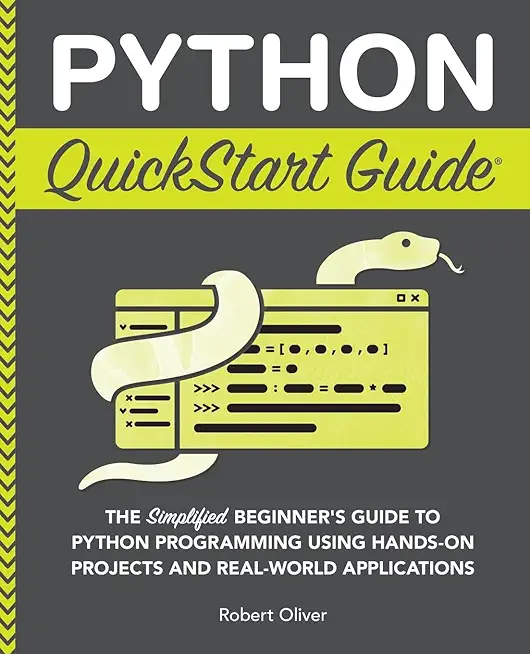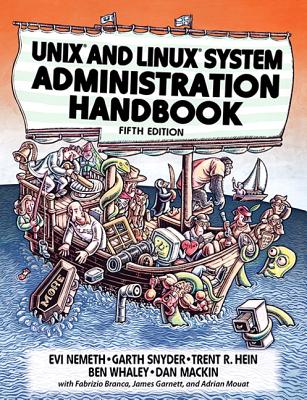Python for Applied Engineers Training in Yuma
|
We offer private customized training for groups of 3 or more attendees.
|
||
Course Description |
||
| This is a 4 - day course that provides a ramp - up to using Python for scientific and mathematical computing. Starting with the basics, it progresses to the most important Python modules for working with data, from arrays, to statistics, to plotting result s. The material is geared towards scientists and engineers. This is an intense, hands - on, programming class. All concepts are reinforced by informal practice during the lecture followed by lab exercises. Many labs build on earlier labs which helps student s retain the earlier material. Python for Programming is a practical introduction to a working programming language, not an academic overview of syntax and grammar. Students will immediately be able to use Python to complete tasks in the real world.
Course Length: 4 Days
Course Tuition: $1690 (US) |
||
Prerequisites |
|
| Must have some experience coding in Python. | |
Course Outline |
|
Python Refresher
Variables
Python Data Types
Sequences
Mapping Types
Program Structure
Files an Console I/O
Conditionals
Loops
Defining a Function
Function Parameters
Builtins
Python 2 vs 3 differences
Pythonic Programming
Common Python Idioms
Slicing and Dicing
Unpacking Function Arguments
Lambda Functions
Nested Functions
List Comprehensions
Iterables
Generator Expressions
Writing Generators
Python Time Travel
Three Python Easter Eggs
A String Trick
String Formatting
Mapping and Filtering
Modules and Packages
Modules
Using import
Initialization Code
Namespaces
Executing Modules as Scripts
Packages
Configuring Import with
__init__.py
Name Resolution (AKA scope)
Nested Functions
Python Style
Classes
About OO Programming
Defining Classes
Constructors
Instance Methods
Properties
Class Methods and Data
Static Methods
"Private" Methods
Inheritance
Untangling the Nomenclature
Collections Module
Metaprogramming
Special Attributes
globals() and locals()
Working with Attributes
The inspect module
Decorators
Decorator Functions
Decorator Classes
Decorating Classes
Creating Classes at Runtime
Monkey Patching
Regular Expressions
Database Access
The DB API
Available Interfaces
Connecting to a Server
Creating a Cursor
Executing a Statement
Fetching Data
Tip: Making an iterator for large queries
Parameterized Statements
Dictionary Cursors
Metadata
Transactions
Object-relational Mappers
qt GUI Programming with PyQt4
What is PyQt4?
Event Driven Applications
GUI Application Flow Chart
External Anatomy of a PyQt4
Application
Internal Anatomy of a PyQt4
Application
Using designer
Anatomy of a designer-based application
Naming Conventions
Common Widgets
Layouts
Selectable Buttons
Making your application stretch
Actions and Events
Menu Bar
Status Bar
Using predefined dialogs
Creating Custom Dialogs
Tabs
Niceties
Working with Images
Network Programming
Sockets
Socket options
Client Concepts
Server Concepts
Application Protocols
Forking Servers
Grabbing HTML from the Web
Consuming Web Services
Web Data the Easier Way
Sending email
Binary Data
The struct module
Multiprogramming
What are Threads?
The Python Thread Manager
The threading module
Threads for the impatient
Creating a thread class
Variable Sharing
Using Queues
Debugging threaded programs
The multiprocessing module
Alternatives to multiprogramming
XML and JSON
About XML
Normal approaches to XML
Which module to use?
Getting Started with ElementTree
How ElementTree works
Creating a new XML Document
Parsing an XML Document
Navigating the XML Document
Using XPath
About JSON
Reading JSON
Writing JSON
Extending Python
Why extend Python?
Ways to extend Python with C
Hand-coded C
Overview
The C Program
Methods
The Method Table
The init function
Handling errors
Custom exception objects
Putting it all together
Using SWIG
The interface file
Generating the Wrappers
Building and installing the extension
cytpes
cffi
numpy
Python’s scientific stack
numpy overview
Creating arrays
Creating ranges
Working with arrays
Shapes
Slicing and indexing
Indexing with Booleans
Stacking
Iterating
Tricks with arrays
Matrices
Data types
numpy functions
scipy
About scipy
Polynomials
Vectorizing functions
Subpackages
Getting help
Weave
A Tour of scipy subpackages
cluster
constants
fftpack
integrate
interpolate
io
linalg
ndimage
odr
optimize
signal
sparse
spatial
special
stats
pandas
About
pandas
Pandas architecture
Series
DataFrames
Data Alignment
Index Objects
Basic Indexing
Broadcasting
Removing entries
Time series
Reading Data
matplotlib
About matplotlib
matplotlib architecture
matplotlib Terminology
matplotlib keeps state
What else can you do?
|
Course Directory [training on all levels]
- .NET Classes
- Agile/Scrum Classes
- AI Classes
- Ajax Classes
- Android and iPhone Programming Classes
- Azure Classes
- Blaze Advisor Classes
- C Programming Classes
- C# Programming Classes
- C++ Programming Classes
- Cisco Classes
- Cloud Classes
- CompTIA Classes
- Crystal Reports Classes
- Data Classes
- Design Patterns Classes
- DevOps Classes
- Foundations of Web Design & Web Authoring Classes
- Git, Jira, Wicket, Gradle, Tableau Classes
- IBM Classes
- Java Programming Classes
- JBoss Administration Classes
- JUnit, TDD, CPTC, Web Penetration Classes
- Linux Unix Classes
- Machine Learning Classes
- Microsoft Classes
- Microsoft Development Classes
- Microsoft SQL Server Classes
- Microsoft Team Foundation Server Classes
- Microsoft Windows Server Classes
- Oracle, MySQL, Cassandra, Hadoop Database Classes
- Perl Programming Classes
- Python Programming Classes
- Ruby Programming Classes
- SAS Classes
- Security Classes
- SharePoint Classes
- SOA Classes
- Tcl, Awk, Bash, Shell Classes
- UML Classes
- VMWare Classes
- Web Development Classes
- Web Services Classes
- Weblogic Administration Classes
- XML Classes
Python Programming Uses & Stats
|
Difficulty
|
Popularity
|
Year Created 1991 |
|
Pros
Easy to Learn:
The learning curve is very mild and the language is versatile and fast to develop.
Massive Libraries:
You can find a library for basically anything: from web development, through game development, to machine learning.
Do More with Less Code:
You can build prototypes and test out ideas much quicker in Python than in other language
|
Cons
Speed Limitations: It is an interpretive language and therefore much slower than compiled languages. Problems with Threading: Multi-threaded CPU-bound programs may be slower than single-threaded ones do to the Global Interpreter Lock (GIL) that allows only one thread to execute at a time. Weak on Mobile: Although, there are a number or libraries that provide a way to develop for both Android and iOS using Python currently Android and iOS don’t support Python as an official programming language. |
| Python Programming Job Market |

Average Salary
|

Job Count
|

Top Job Locations
New York City Mountain View San Francisco |
|
Complimentary Skills to have along with Python Programming
The potential for career growth, whether you are new to the industry or plan to expand your current skills, depends upon your interests:
- For knowledge in building in PC or windows, phone apps or you are looking your future in Microsoft learn C#
- For android apps and also cross platform apps then learn Java
- If you are an Apple-holic and want to build iOS and MAC apps and then choose Objective C or Swift
- Interested in game development? C++
- Data mining or statistics then go with R programming or MATLAB
- Building an operating systems? C
|






